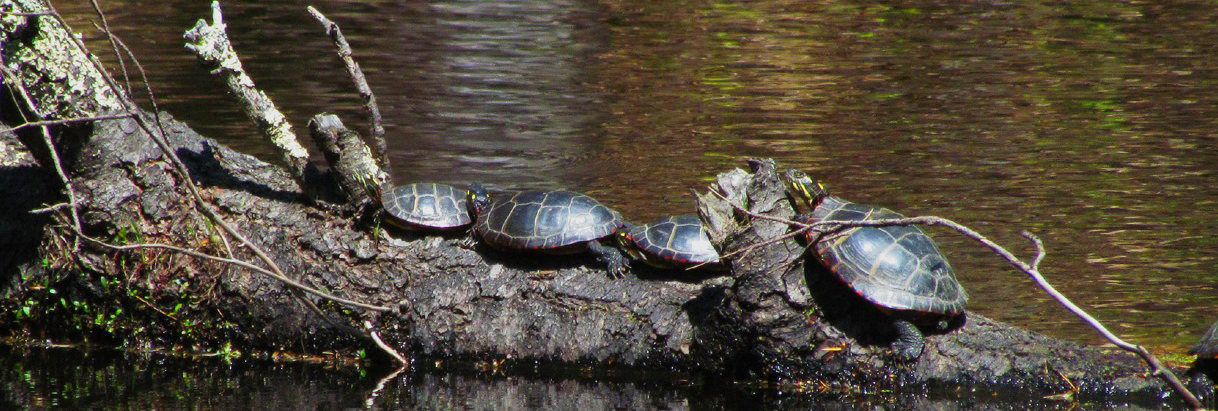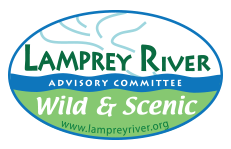Lesson 2: THE RIVER FLOWS THROUGH LIFE
Overview:
This lesson focuses on the many ways people have used the Lamprey River from the past to the present. Students need to understand how the river has been utilized throughout history so that they can help to ensure the health and vitality of the river in years to come. In this lesson students will be able to see and hear about the communities through which the Lamprey River flows. They will view a video and complete a viewing activity sheet to increase their knowledge and appreciation of the Lamprey River.
Focus:
How have people used and benefitted from the river from the past through the present?
Learning Objectives:
Students will be able to
- identify the communities through which the Lamprey flows;
- explain how people and other living things use the river;
- identify some species of wildlife found along the Lamprey.
Duration: 1 hour
Materials:
__copy of "RIVER STORY: The Lamprey River Through History" DVD or visit
Watch Video here.
__television and DVD player
__copies of the Video Viewing Activity sheet for each student
__extra sheet of paper for each student
__pencils
Pre-viewing Activities:
1. Have students look at the individual maps they created as part of Lesson 1 (or give them maps showing the rivers of the state). Ask students to discuss what they discovered when they completed the maps or what they notice about the Lamprey River on the maps they have been given.
2. On a separate sheet of paper, have students generate questions they would like to have answered about the Lamprey River. Collect the papers to be used after viewing the video. Be sure to show the video without interruption at some time during the unit.
Focus for Viewing: Read through the questions on the viewing sheet with the students and ask them to pay close attention during the video in order to complete the activity.
Video Viewing Activity
Begin the DVD or view video at
Part 1: http://www.youtube.com/watch?v=tQydbiIDryA
Part 2: http://youtu.be/MALMBfnmntk
Part 3: http://youtu.be/YU2Vovq84wU
PAUSE when the watercolor of the flying geese appears on the screen and the narrator completes his sentence. Have students record the three reasons the river was essential in early times. Resume play.
PAUSE when the black-and-white photo of the Native American appears on the screen. Ask students to complete the second question regarding how long ago Native Americans lived along the Lamprey River. Resume play.
PAUSE as the small painted turtle begins to move across the screen. Have students list five different animals they might find along the Lamprey River. Allow time for students to share answers to ensure that all of the animals shown are noted. Resume play.
PAUSE after the fawn gets up and begins to move across the screen. Have students answer the question concerning the community in which the Lamprey River begins. Note that the question is asking for the community and not the exact location. Resume play.
PAUSE when the black-and-white photo with the green box titled “Deerfield/ Recreation” appears. Have students predict two ways the river might be used for recreation. Resume play.
PAUSE when the black-and-white photo with the green box titled “Raymond and Candia/Early Mills” appears. Have students discuss whether or not their predictions were correct. Resume play.
PAUSE after the narrator says, "... many lines linked New Hampshire towns," and the railroad station appears in the background. Have students list two ways New Hampshire people used mills along the river. Resume play.
PAUSE after the block of ice is directed into the icehouse by the man sitting along the chute. Ask students to think about and write why ice cutting was important to people living along the river in the late 1800s and early 1900s. Resume play.
PAUSE after the narrator says, "... straddled the entire river and used a horizontal waterwheel." Have students note on their viewing papers where along the Lamprey this unique situation occurred. Resume play.
PAUSE after the narrator says, "... that employed 15 people" and water is shown flowing over the dam. Have students list three different items that were manufactured at the Wiswall Dam site. Allow time for students to share their ideas. Resume play.
PAUSE after the narrator says, "... river town of Newmarket." Have students complete the question asking where the Lamprey River ends its journey to the ocean. Resume play for the completion of the DVD.
After viewing of the DVD is complete, redistribute the pre-viewing question sheets that students generated earlier. Ask students if there are still any questions that were not answered from watching the video. In the event that there are, determine the relevance of future research by your students or provide the answers yourself. The listing of resources in the appendix might be useful.
.
.
RIVER CHANGES
by Sam
Sometimes the river changes in many, many ways.
Like it could slide or crash or collide,
Or sometimes it could be smooth and soft and calm.
It's really, really strange how these things are so,
But that's just the way it goes.
.
.
THE WATERFALL
by Jonathan
The river is winding like a snake,
Twisting and flowing into a clear lake.
The lake turns into a splashing and wild waterfall.
At the botton of the waterfall,
The river becomes bubbling, crystal dewdrops...
And the river shivers.
VIDEO VIEWING ACTIVITY
student's name ___________________________________date __________________
Watch and listen carefully to the DVD "RIVER STORY: The Lamprey River Through History" that your teacher is going to show you. When the movie is paused, answer the appropriate questions below.
1. List the three reasons the Lamprey River was essential to people in early times:
a) __________________________________________________
b) __________________________________________________
c) __________________________________________________
2. How many years ago did Native Americans begin to live here? ______________
3. List five different animals you might find along the Lamprey River:
a) __________________________________________
b) __________________________________________
c) __________________________________________
d)__________________________________________
e) __________________________________________
4. In which community does the Lamprey River begin? ___________________________
5. Predict two ways that the Lamprey River might be used for recreation. (How would you like to use the river?)
a) _____________________________________________
b) _____________________________________________
6. List two ways New Hampshire people used mills along the Lamprey River:
a) __________________________________________________________
b) __________________________________________________________
7. Why do you think that ice cutting was so important to the lives of people living along the Lamprey River in the late 1800s and early 1900s?
______________________________________________________________
______________________________________________________________
______________________________________________________________
8. What might be the only location along the Lamprey River at which a mill straddled the entire river and a horizontal waterwheel was used?
____________________________________________________________
9. List three different items that were manufactured at the Wiswall Dam site:
a) ___________________________________
b) ___________________________________
c) ____________________________________
10. In what community does the Lamprey River end its journey to the sea?
___________________________________________________________
11. What two facts did you find to be the most interesting about the Lamprey River?

